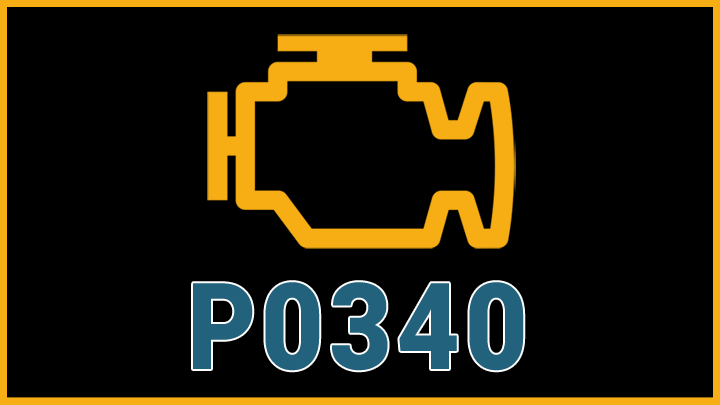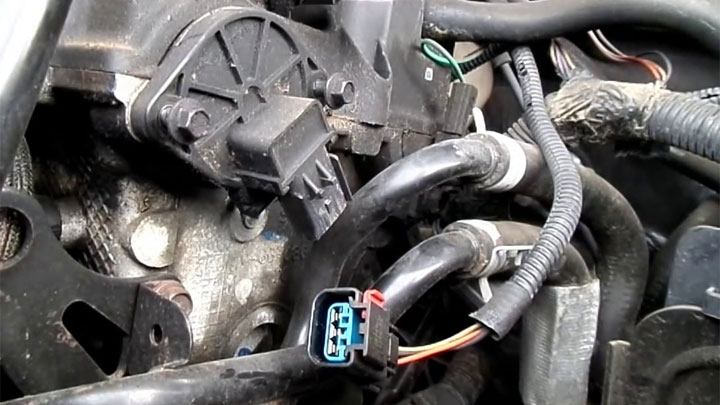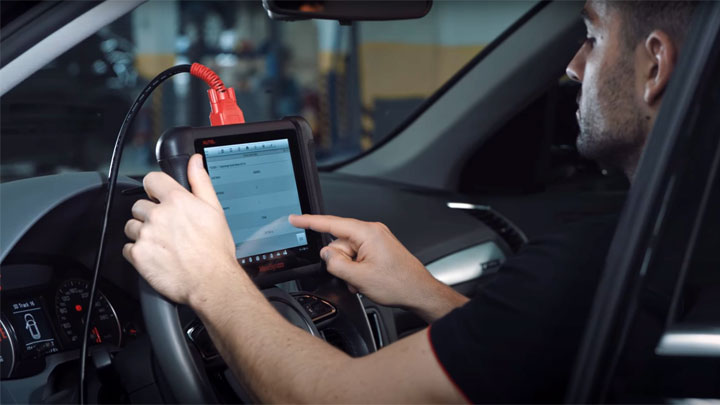P0340 Code (Symptoms, Causes, and How to Fix)
The sudden appearance of a check engine light can lead to dismay at impending repair costs. Anxiety increases when the trouble code seems complex, like P0340 relating to the camshaft position sensor circuit. While this often deters DIY repairs, solving DTC P0340 is rarely that difficult.
Keep reading to learn about common causes of a P0340 code and how to fix it (usually in one afternoon).

What Does Code P0340 Mean?
At any given time, a vehicle’s ECM (engine control module) monitors dozens of sensors, in a bid to achieve optimal combustion efficiency. However, each of these sensors, as well as their associated circuits, must be in proper operating condition, in order for all to function as intended.
In the case of DTC P0340, a vehicle’s ECM has determined the data being supplied by the vehicle’s camshaft position sensor, to be irrational. Therefore, the ECM illuminates a check engine light as a way of bringing light to the issue at hand.
Modern internal combustion engines rely upon accurate data regarding engine timing, in order to optimize various operational functions. The most vital of these functions relate to ignition and fuel injection timing, which can both suffer indefinitely, should inaccurate engine speed signals be relayed to the corresponding ECM.
Many modern vehicles rely upon the signal from their engine’s camshaft position sensor as the primary source of all engine speed related data. While most all ECMs also record data attributed to an engine’s crankshaft position sensor, this method of data acquisition is often deemed less accurate than that supplied by the camshaft position sensor.
While some vehicles will default to readings from the crankshaft position sensor in the event of camshaft position sensor failure, others will not. In the event that the latter takes place, vehicle drivability will be adversely affected.
Related Codes: P0341, P0344, P0345
Symptoms of Code P0340

The symptoms associated with DTC P0340 often vary from one make and model of vehicle to the next. However, several of these symptoms are relatively standard, no matter the vehicle in question.
The following are several of the most common symptoms of DTC P0340.
- Failure to start/difficulty starting engine
- Intermittent stalling
- Rough or erratic idle
- Occasional misfires
- Check engine light
Causes of Code P0340

A number of underlying issues can lead to the onset of a P0340 trouble code. To determine the exact cause of such a code, as it pertains to your specific vehicle, thorough diagnostics will be necessary.
The following are several of the most common causes of DTC P0340.
- A faulty camshaft position sensor
- Damaged wiring within camshaft position sensor circuit
- Damaged camshaft position sensor wiring
- Dirty or obstructed camshaft reluctor wheel
- A faulty crankshaft position sensor
- ECM/PCM fault
Is Code P0340 Serious?
DTC P0340 is considered quite serious, due to the lengthy list of potential driveability concerns which often accompany its onset. In the most serious of cases, underlying issues relating to code P0340 can lead to a no-start or stalling condition, which can quickly render a vehicle inoperable.
P0340-related stalling issues can also pose a risk to one’s safety. If a vehicle were to stall at any speed while in operation, a dangerous set of circumstances can easily present itself. These concerns are only exacerbated when frequent interstate travel is standard.
In any event, the root cause of a P0340 diagnostic trouble code should be addressed as soon as possible. If you do not feel comfortable completing such repairs yourself, or simply do not have the free time to do so, an appointment with a trusted automotive repair facility should be made at the soonest availability.
How to Fix

The following steps will assist you in accurately diagnosing the root cause of your vehicle’s P0340 diagnostic trouble code. As always, one should also consult their vehicle’s factory specific service literature, for the most accurate means of diagnosing such faults related to their specific vehicle.
#1 – Check For Additional Codes
Prior to beginning the diagnostic process, it is important to check for the presence of any additional trouble codes, with the use of a scan tool. If any additional codes are found, each should be diagnosed in its entirety.
#2 – Inspect Wiring Within Camshaft Position Sensor Circuit
One should now carefully inspect the wiring that relates to their engine’s camshaft position sensor. This wiring should be checked for any breaks or abrasions, all of which are most likely to take place along any exposed points within the circuit. If any such damage is observed, proper repair should take precedence.
#3 – Inspect Camshaft Position Sensor Connector
You should now inspect the connector associated with your engine’s camshaft position sensor. A quick tug-test will ensure that this connector is tight. Additionally, all pins within this connector should be checked for damage or corrosive build-up.
#4 – Check Camshaft Position Sensor Signal
If DTC P0340 remains, the signal associated with the affected camshaft position sensor should be verified. This can be done with most premium scan tools, or alternatively with an oscilloscope. If irregularities within the square wave reported by the sensor are notated, sensor replacement is advised.
#5 – Verify Crankshaft Position Function
In some cases, an engine’s ECM will rely upon a comparison between the crankshaft position sensor signal and camshaft position sensor signal to validate each sensor’s functionality.
If the affected engine’s camshaft position sensor has tested good, the crankshaft position sensor should be tested in a similar manner. Likewise, any irregularities during this test will require crankshaft position sensor replacement.
#6 – Check For ECM/PCM Updates
If issues related to DTC P0340 persist, a vehicle’s ECM/PCM becomes suspect. Prior to condemning a module of this type, it is important to ensure that all associated software is up to date.
- P0480 Code (Symptoms, Causes, and How to Fix) - Apr 19, 2024
- Car Temperature Gauge Stopped Working? (Here’s Why) - Apr 15, 2024
- Ignition Coil vs Coil Pack (What’s the Difference?) - Apr 8, 2024
